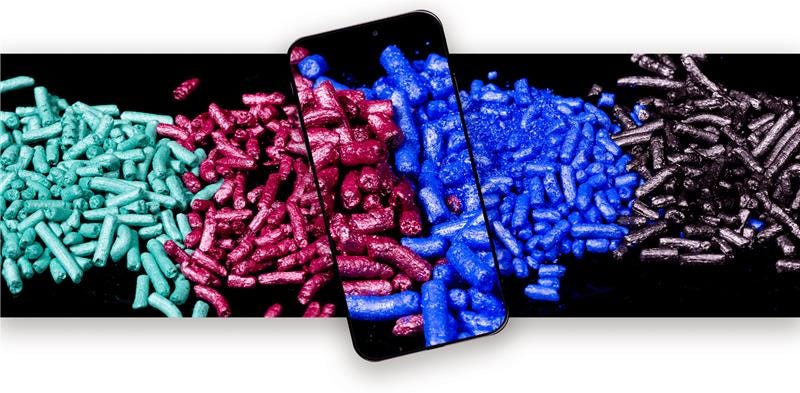How to Formulate Water-in-Oil Emulsions
A water-in-oil (W/O) emulsion is a type of cosmetic emulsion where tiny droplets of water are dispersed throughout a continuous oil phase. This structure is the opposite of the more common oil-in-water (O/W) emulsion, where oil droplets are suspended in water. In a W/O emulsion, the external oil phase creates a protective, occlusive barrier that slows water evaporation, making it ideal for rich, long-lasting moisturizers and water-resistant formulations. You’ll often find water-in-oil emulsions in products like sunscreens, night creams, baby care products, and foundations that require longer wear time or enhanced resistance to sweat and water.
Why Choose a Water-in-Oil Emulsion?
Benefits of W/O Emulsions in Cosmetics
Water-in-oil emulsions offer several functional and sensory advantages in cosmetic formulations. One of the most notable benefits is enhanced water resistance, making them ideal for products exposed to moisture or perspiration, such as sunscreens or long-wear makeup. Because the outer phase is oil, W/O emulsions form an occlusive barrier on the skin, helping to lock in moisture and protect against transepidermal water loss (TEWL). This structure also imparts a rich, luxurious texture that’s especially well-suited for nourishing and protective skincare products.
Best Use Cases
Due to their durability and emollient-rich feel, water-in-oil emulsions are frequently used in cold weather creams where skin needs additional protection from harsh environments. They are also a go-to choice for long-wear color cosmetics that must resist smudging or fading throughout the day. Additionally, SPF products and baby care formulations often rely on W/O systems for their water-resistant, barrier-forming qualities and gentle skin compatibility.
Key Ingredients in W/O Emulsions
Choosing the Right Water-in-Oil Emulsifier
Selecting the appropriate emulsifier is critical to the stability and performance of a water-in-oil emulsion. Emulsifiers used in W/O systems are typically lipophilic, meaning they have a stronger affinity for oil than water. These emulsifiers stabilize the dispersion of water droplets within the continuous oil phase. When evaluating emulsifiers, the Hydrophilic-Lipophilic Balance (HLB) system is a helpful guide. W/O emulsions generally require low HLB values—typically between 3 and 6—indicating the emulsifier favors the oil phase and can effectively hold the emulsion together.
The Role of the Oil Phase
The oil phase forms the external structure of a W/O emulsion, significantly influencing the product’s texture, absorption, and skin feel. Common ingredients in the oil phase include esters, natural oils, silicones, and other emollients. These ingredients are chosen not only for their functional properties—such as spreadability, occlusiveness, and compatibility with the emulsifier—but also for the sensorial profile they deliver. For example, lightweight esters can improve slip, while heavier oils can contribute to a more cushiony, nourishing feel.
The Aqueous Phase
While water is the internal phase in a W/O emulsion, it still plays a crucial role. The aqueous phase often includes humectants like glycerin or propanediol to attract and retain moisture. It may also contain water-soluble actives designed for targeted skin benefits. However, the total water content in W/O emulsions is typically lower than in O/W emulsions—often around 20–40%—to maintain emulsion stability and avoid phase separation. Careful formulation is required to ensure actives are effectively delivered and do not destabilize the emulsion system.
Step-by-Step Process to Formulate a W/O Emulsion
Phase Preparation
The first step in formulating a water-in-oil emulsion is preparing each phase with care. Ingredients should be grouped into oil and aqueous phases based on solubility, and heating should be performed separately to avoid degradation of heat-sensitive materials. Sensitive actives, fragrances, and preservatives are typically added during the cool-down phase after emulsification. Powders and other solids should be pre-dispersed—either in the oil or aqueous phase depending on solubility—to ensure uniform distribution and prevent clumping during mixing.
Emulsification Technique
W/O emulsions require high shear mixing or homogenization to finely disperse water droplets throughout the oil phase. Unlike O/W emulsions, where oil is typically added to water, W/O emulsions are created by slowly adding the aqueous phase into the oil phase while mixing continuously. This method helps prevent inversion (i.e., accidentally forming an O/W emulsion) and ensures a stable dispersion. Equipment such as rotor-stator mixers, homogenizers, or high-shear propellers are commonly used to achieve the necessary droplet size and distribution.
Stability Considerations
Formulation stability is a critical factor in W/O emulsions. One of the most important parameters is droplet size—smaller water droplets lead to a more stable and uniform emulsion. Phase separation is a common risk in W/O systems and can be minimized by ensuring the correct emulsifier concentration, maintaining an appropriate water-to-oil ratio, and avoiding excessive shear. Stabilizers such as waxes, polymers, or thickeners may also be included to increase viscosity and support the emulsion structure. Proper packaging and storage testing under stress conditions (heat, cold, freeze-thaw cycles) are essential to confirm long-term stability.
Common Challenges and How to Troubleshoot Them
Emulsion Instability
One of the most common issues in water-in-oil emulsions is instability, often visible as phase separation, creaming, or coalescence over time. This can occur when the emulsifier concentration is too low, the water droplet size is too large, or the oil-to-water ratio is unbalanced. To troubleshoot, first ensure that the emulsifier used is suitable for W/O systems and applied within the recommended use level. Increase shear during emulsification to reduce droplet size, and consider adding a secondary stabilizer—such as a wax or polymer—to enhance viscosity and structure. Performing accelerated stability tests can also help identify weak points early in development.
Poor Skin Feel or Texture
The oil phase dominates the sensory profile of a W/O emulsion, so issues like greasiness, tackiness, or heaviness are common. These problems can often be resolved by adjusting the types and levels of oils and esters used. Replacing heavier oils with lightweight emollients or silicones can improve spreadability and after-feel. Additionally, modifying the emulsifier ratio may help achieve a more balanced texture—too much emulsifier can feel soapy or heavy, while too little can lead to instability and drag during application.
Compatibility of Actives
Since W/O emulsions have an external oil phase, formulating with water-soluble actives can be tricky. These actives reside in the internal phase and may not deliver effectively to the skin without a proper delivery system. To address this, ensure that the water-soluble active is stable at the pH of the aqueous phase and compatible with the other ingredients. Encapsulation technologies or solubilizers can also help incorporate challenging actives. If working with oil-soluble actives, the process is more straightforward, but attention should still be given to potential interactions with the emulsifier or oil phase components.




